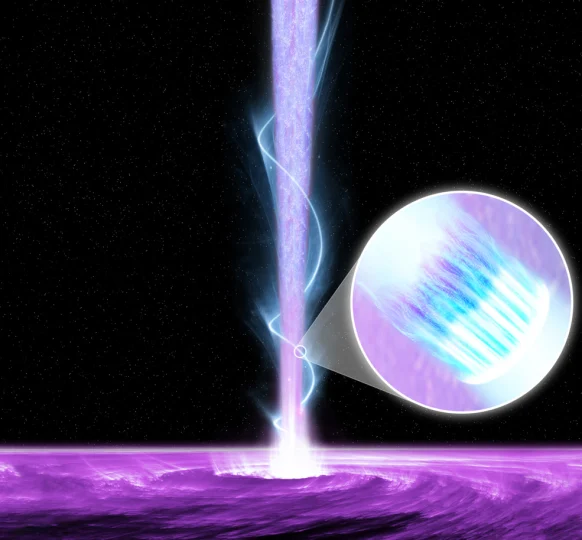On Dec. 9, astronomers and physicists commemorated two years of landmark X-ray science by NASA’s IXPE (Imaging X-ray Polarimetry Explorer) mission.

A gif of IXPE deploying in space before starting its science operations to study the cosmos. Image credit: NASA
IXPE is the joint NASA-Italian Space Agency mission to study polarized X-ray light. Polarization is a characteristic of light that can help reveal information about where that light came from, such as the geometry and inner workings of the ultra-powerful energy sources from which it emanates.
Launched Dec. 9, 2021, IXPE orbits Earth some 340 miles high, studying X-ray emissions from powerful cosmic phenomena thousands to billions of light-years from Earth, including quasars, blazars, remnants of supernova explosions such as neutron stars, and high-energy particle streams spewing from the vicinity of black holes at nearly the speed of light.
“Adding X-ray polarization to our arsenal of radio, infrared, and optical polarization is a game changer,” said Alan Marscher, a Boston University astronomer who leads a research group that uses IXPE’s findings to analyze supermassive black holes.
“We’re all familiar with X-rays as a diagnostic medical tool for humans. Here we’re using them differently, but they are again revealing information that is otherwise hidden from us,” said Stanford University researcher Josephine Wong, who co-authored findings in October based on IXPE studies of the pulsar wind nebula MSH 15-52, some 16,000 light-years from Earth.
Martin Weisskopf, the astrophysicist who led the development of IXPE and served as its principal investigator until his retirement from NASA in spring 2022, agreed.
Scientists have long understood, for example, the fundamentals of blazars such as Markarian 501 and Markarian 421. A blazar is a massive black hole feeding off material swirling around it in a disk, creating powerful jets of high-speed cosmic particles which rush away in two directions perpendicular to the disk. But how are those particles accelerated to such high energies?
IXPE data published in November 2022 in the journal Nature identified the culprit at Markarian 501 as a shock wave within the jet.

This NASA illustration shows the structure of a black hole jet as inferred by recent IXPE observations of the blazar Markarian 421. The jet is powered by an accretion disk, shown at the bottom of the image, which orbits and falls into the black hole over time. Helical magnetic fields are threaded through the jet. IXPE observations have shown that the X-rays must be generated in a shock originating within material spiraling around the magnetic fields. The inset shows the shock front itself. X-rays are generated in the white region nearest the shock front, whereas optical and radio emission must originate from more turbulent regions further away from the shock. Image credit: NASA/Pablo Garcia

